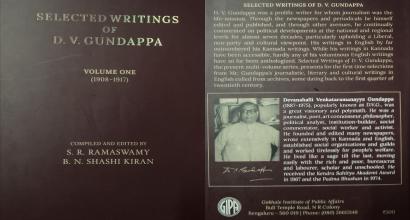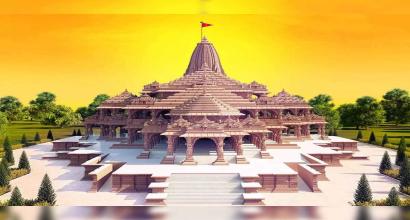Now I’m setting out to reminisce about my teachers.
The almighty has blessed me in myriad ways and has given me several shortcomings as well. Of those shortcomings, two are related to the aforementioned scenario.
1. I do not have prospects to indicate my relationship to eminent personages and feel proud that my teacher was that great paṇḍita or this brilliant vidvān. My teachers were remarkable men in my view but were unknown to the world; they did not boast of great titles such as ‘Mahāmahopadhyāya,’ ‘D.Litt.,’ and so forth; they had not roared in large assemblies. They were among the commonest of commoners.
2. I cannot even claim that a certain famous personality or an exceptionally competent individual was among my classmates. Those who studied with me were also among the commonest folk. Nobody ascended to the rank of a great scholar. They did not rise to positions of power. They did not gain fame by becoming an advocate or a doctor.
Classmates
I shall name a few of my classmates. From that alone their position and status will become clear. Suṇṇakallu[1] Nāga, the laundryman’s son Subba, Veṅkaṭadāsari’s son Veṅkaṭaśāmi, the blacksmith’s son Gurappācāri, the school peon Mādayya’s son Munitimma, Baṇajiga[2] Guruvayya.
Such were my classmates. One or two among them hailed from cultured families. But most of the boys came from households of those engaged in village chores.
This being the case, in my education history, matters that will please the learned are extremely scarce.
Even so, there’s a dash of audacity. A confidence, that there exists a place on earth for immature, unripe souls like us too. “We have a right to live!” is a belief that hasn’t been erased in me. It is from that courage I dare to write this essay.
Shortcoming
What I termed as ‘shortcoming’ earlier comes from a genuine feeling in my heart; it is not for theatrics. Although I was a boisterous scamp in my childhood, I’ve come to realise only recently that education is a matter of great consequence. Fifty years ago if I had recognised this, probably I would’ve gained proximity to great scholars and [under their tutelage] perhaps attained mastery of one or two śāstras! I didn’t learn any of the śāstras from great scholars and so attain cultural refinement; I wasn’t acquainted with geniuses and greats [of that era] – I will always harbour sorrow and a sense of apprehension in my heart for this [shortcoming]. To feel pride in having learnt from a great guru and to remember him time and again, bowing to him with reverence – this is a great fortune; the Almighty did not bestow upon me such a fortune.
~
In ancient times, before the akṣarābhyāsa saṃskāra[3] was performed, the child would not be made to write even a single letter of the alphabet. It was a belief among our people that this [i.e. not writing a word before the akṣarābhyāsa] would be auspicious to the child and his education would take place holistically and without hurdles.
Akṣarābhyāsa
The first day of akṣarābhyāsa—learning the letters of the alphabet—was a day of festivity at home. The joisaru (astrologer) would fix a date for it. On that particular day, the child would be bathed and presented with fresh clothes. He would be around five years old. A tilaka or candana would adorn his forehead. Once he got ready, he was made to perform a pūjā. A painting of Sarasvatī, or that of any other Devī or a vigraha, the painting of Gaṇeśa or a piḻḻāri[4], one or two books, an inkpot, a pen, a slate, and chalk-piece – these would be the paraphernalia for the pūjā. The Sarasvatī-pūjā would be performed with sandalwood, flowers, turmeric, vermillion, incense, and lamp[5]. The child’s father or grandfather would assist him. The purohita would perform the pūjā by recitation of mantras and then bless the child. Puri, coconut, and jaggery would be distributed to the friends of the boy. And then the main śloka taught by the purohita would be –
sarasvatī namastubhyaṃ
varade kāmarūpiṇī।
vidyārambhaṃ kariṣyāmi
siddhirbhavatu me sadā॥Sarasvatī! I offer my salutations to you
O giver of boons! You are the embodiment of enjoyment!
I am starting my education –
let excellence always be with me!
After getting the boy to recite this śloka, he would be made to write a line on the slate – ‘śrī gaṇeśāya namaḥ’ [Salutations to Gaṇeśa!], ‘śrī śāradāyai namaḥ’ [Salutations to Śāradā], ‘oṃ namaśśivāya’ [Om! Salutations to Śiva!], or ‘oṃ namaśśivāya siddhaṃ namaḥ’ [Salutations to Śiva and the siddhas!]
Since the first line that the student wrote on that occasion comprised the words ‘oṃ namaḥ,’ this ceremony came to be known as the ‘onāma lesson,’ or the ‘teaching of onāma.’ Just as the introductory lesson is called the ‘ABC lesson’ in English, it is called the ‘onāma pāṭha’ in Kannada.
The very first sentence of the child’s lesson is the closing sentence of the wise elders. The great jñānis utter ‘oṃ namaḥ’ at the end. What was the Beginning is also the End.
Puṭṭappa
I remember my elders saying that this saṃskāra was conducted for me as well. The people who involved in the saṃskāra were my father and our kula-guru ‘Vedamūrti’ Veṅkaṭarāmabhaṭṭa. After this, a tutor by name Puṭṭappa taught me the letters of the alphabets methodically in his lessons, day after day.
Puṭṭappa was a school teacher in some village near Mulbagal. He taught the first standard. My grandfather respected him immensely. Puṭṭappa visited Mulbagal once every two or three months. He would then visit our home without fail. On the day of his visit, a culinary specialty would be prepared at home. Puṭṭappa would partake of that savoury; he would chew beetle leaves with betel-nut[6]; he would inquire after everyone’s well-being; I would touch his feet and offer my salutations. This went on for a long time. Technically speaking I didn’t study in Puṭṭappa’s school. He only introduced me to the letters of the alphabet and did not have the chance to introduce me to any higher knowledge. Although the knowledge imparted by him was minimal, everyone respected him for his humility and courtesy.
To be continued...
This is the first part of a three-part English translation of the fifteenth chapter of D V Gundappa’s Jnapakachitrashaale – Vol. 8 – Sankirna Smrti-samputa. Edited by Hari Ravikumar.
Footnotes
[1] Suṇṇa refers to the slaked lime paste that is used in the preparation of paan. Suṇṇakallu means ‘a block of slaked lime’ and possibly refers to a caste of people who were exclusively engaged in such activity.
[2] The name of a backward caste.
[3] Sixteen saṃskāras (loosely translates as 'rites of passage' or 'refinement') are typically identified in Sanātana-dharma that mark certain significant points in the life of an individual. The saṃskāra of Akṣarābhyasa, also called Vidyārambha (‘beginning of education’) is typically done when the child is around five years old by introducing him to the letters of the alphabet. This also includes prayers to Sarasvatī and Gaṇeśa.
[4] A small vigraha of Gaṇeśa made of clay or cowdung.
[5] The original has ‘gandha-puṣpa, ariśina-kuṃkuma, dhūpa-dīpa.’
[6] The original has ‘tambūla,’ which basically refers to paan.






































